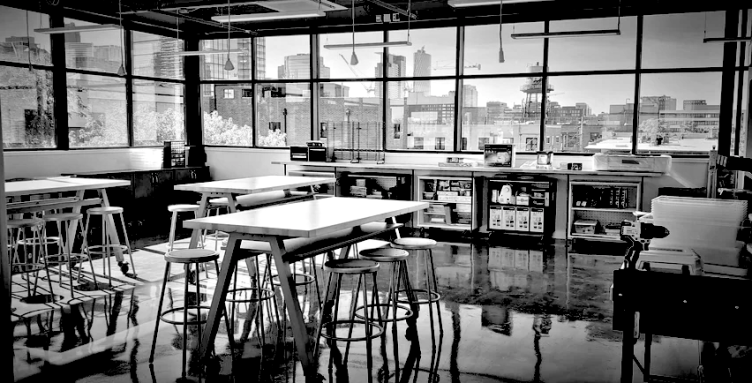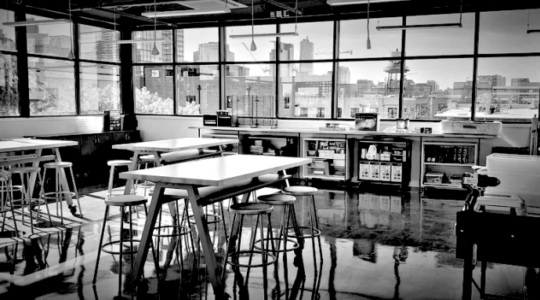It takes an incredible team of educators and school leaders to rapidly execute the redesign of school for home learning during a time of pandemic worry. Yet, this is the current experience for many of the 98,000 public schools and at least 34,000 private schools in the U.S. who serve some 50.8 million public and 5.8 million private school students. We are now mostly all closed for on-campus face to face learning, with many of us now “open online.”
The K-12 education sector is rapidly experiencing the redesign of school, for at-home, and distance learning and via a screen. In innovation terms this a rapid disruption of epic proportions of our social norms that the sector has never seen before. Most change in K-12 education with and through technology is incremental, even that of the Internet in schools has been somewhat gradual and overtime during the last 20 odd years, with many children still not having ubiquitous computing or technology access.
Yet, for the first schools to transition online, schools like Bennett Day School, who was one of the first schools in Chicago to roll-out distance learning via a screen to their families, there has been much learning.
Bennett Day School, a progressive PreK-12 learning organization in West Town Chicago, is one of the independent schools leading the sector across the country to remain “open and online”, while our physical campus is closed. Ten-days before the closure of schools across Illinois, our board Chaired by Michael Locke and our founders, CEO Cameron Smith and Principal and Chief Academic Officer, Kate Cicchelli led a plan, in collaboration with our divisional directors Martin Moran, Meg Fitzgerald, Jackie Miller, and over 60 faculty.
The plan was to move all our classes from on-campus face to face delivery to be experienced by our students at-home, remotely and via a screen. We prioritized the health and well-being of our community, began training and supporting our faculty in their digital learning needs, and we filled take-home bags in readiness for the closure of our campus. To pivot and execute the plan quickly and as effectively as possible, we leaned into our core school design principle: “How might we imagine school differently?” Many of us quickly asked ourselves and while moving quickly, “How might we experience school-led learning when we — our children, faculty, families and our school partners, are all at home under government orders to socially distance in a time of pandemic worry?”
Four-weeks since closing our campus, and just over three-weeks since opening online and starting the delivery of Bennett Day School Classes at home and via a screen, here are seven key learnings as shared through my digital learning and innovators’ lens.
1. Educators and school leaders across the country are all in this together.
In K-12 schools we often remain focused on how learning is experienced on our campus and within our school walls, separated by geography and our public/private school status. Yet, in the last two weeks, educators have connected more deeply with each other and school leaders via social technologies, sharing resources and practices for this new reality. While we are distanced physically from our colleagues and peers, we are perhaps even more socially connected to each other right now in terms of our shared purpose. I have seen more online groups for educators pop up and existing ones grow in member numbers exponentially as educators are rapidly learning how to offer learning services differently. Sherry Turkle, the Abby Rockefeller Mauzé Professor of the Social Studies of Science and Technology at MIT, calls this state, as being “Alone Together”.
While we are physically distant from each other, we are socially connected to our purpose, our colleagues and our peers more than ever.
2. Learning what our families are experiencing is even more important right now.
The family community of a school or school district transcends the physical spaces of our campus into the homes and neighborhoods of our families, wherever they are. Yet, in our, every day, educators and school leaders, we often remain focused on where we are and how we are delivering learning on our campus. We focus less on the lived experience of how learning occurs at home for our students and families. Right now, this has been flipped. We are seeing into our family’s homes more than ever, and them into ours. As we sit behind a screen on a Classroom Zoom Call or sharing lessons or 1:1 parent-teacher conferences via a Google Meet, we are getting a deeper understanding of what home and learning really is like for our children. Which students have the support of an adult or sibling and who doesn’t? And what does access to a device or the Internet at home really mean?
We are asking more of our families and more questions about how the learning experience, now at home, is for them.
3. Using learning technologies is a critical skill for ALL of us to master, not just our children and teachers.
In K-12 education, we often use technologies to support the face to the face learning experience of our students on and off-campus. Teachers and school leaders have control over what we roll out, how we roll it out and how we support our teachers and students in learning how to use it. What is happening right now, as Pre-K through to Year 12 move their classes online, we are seeing the need not just for access to software like Zoom and Google Classroom, as well as good home Internet access as being important. There is a critical and rapid need for us to also educate our parents and guardians on these same learning technologies, to verify our children are protected while using them and to ensure our teachers have responsive tech support while they are in class, delivering online. At the moment a child or a parent can’t open a document, use a tool or watch a video that has been asked of them, the learning opportunity may be lost.
The Digital competency of our families has become everything in order to deliver learning at home, remotely and via the screen.
4. We are rapidly prototyping multiple modalities of “at home”, “distance” and “digitally mediated” learning practices without training or deep instruction and all at once.
Not only are we rapidly executing classes and designing learning materials that are mediated by a screen, and delivering them to our students when the class is “physically” distant from each other. We are also curating learning experiences and resources, often without testing them, for our students to do at-home, in-the-home, via a screen, on their own or only with the family members, they may live with. We are quickly prototyping and scaling blended learning across multiple learning languages, and trying to make it as personal as possible for each student and family. And all while we are at-home our selves. Educators and are rapidly live prototyping and at times failing across learning languages and technology interfaces and in front of each other.
Educators and families need responsive support, deep understanding, as well as permission to fail. We are all learning together, and however, the learning experience occurs will be just fine.
5. Home learning and homeschooling are very different, yet we can learn from each other.
There has been a rapid increase in the use of the term #Homeschooling. Yet, homeschooling means learning outside of the public or private school environment and is more often delivered by a parent or guardian, who homeschools “as the teacher” their own children at home. Today, we are experiencing home learning and on-mass. Public and private school teachers are designing classes and learning activities from their own homes, surrounded by their family and using their own home internet access, to deliver their classes and activities to students in theirs. This is a school designed and delivered home learning challenge of epic proportion, calling for all of us to be patient and kind to teachers and families, as well as those supporting them.
Breathe! We need to adjust our expectations of school, of teachers and families because everyone, is navigating this new reality of home learning, differently.
6. Parents, guardians, and siblings are the community we serve, not our co-teachers.
A co-teacher is a learned peer whom we often collaborate with and with whom we co-design learning experiences, curriculum, resources and whom we test things out with. When a school is delivering learning at home, with a teacher who is remote and mediated by a screen, and especially for young learners — in early childhood, elementary and middle school, there is a risk that the parent, guardian, or the sibling around them takes on the role as quasi-co-teacher. Reading the instructions, setting up the activity, answering the child’s questions and ultimately joining them on their learning journey. In this, we have to remember our parents, guardians, and siblings might not have the requisite knowledge or experience to do all we ask, and our instructions need to be very clear and for a student (not a teacher) audience.
Whatever activities you plan to roll out in a day or a week like you would on-campus, it will be too much and it will take longer (about twice to thrice the time) for a student to complete it at home without you, their teacher beside them.
7. Design for joy in ALL learning experiences, especially in a time of pandemic worry.
For children, youth and adults alike, learning is fundamentally a creative, innovative and entrepreneurial experience. One that at our most primed for learning, is filled with joy and love and is collaborative. In the words of Loris Malaguzzi, founder of Reggio Emilia’s educational philosophy that Bennett Day School is founded on, there is “Nothing without joy.” Joy and excitement are the lifeblood of the learning process with joy being a natural part of the learning experience. Our children, our teens, and our adults need joy now more than ever. Be it designing an at-home obstacle course for PE or a Tinker Lab at home for Technology & Engineering Sciences, or doing math inspired scavenger hunt for all the blue things you can find in the house, there can be joy in all things learning, no matter where it takes place.
We must remember to infuse creativity and joy in all our learning experiences when our learners are at home, we are socially distanced from them and learning is delivered via the screen. This is especially important during this time of pandemic worry.
Overall we are all learning a lot, very quickly and remotely via a screen.
Educators and school leaders in the K-12 sector right now are learning a new way to imagine school when it is beyond our campus and instead delivered in the comfort of a child and their family’s own home. We are learning how might we imagine School, when delivered during a global crisis of pandemic worry.
Most importantly we are all learning just how creative, innovative, entrepreneurial and hard-working our schools, school leaders and our teachers really are.

